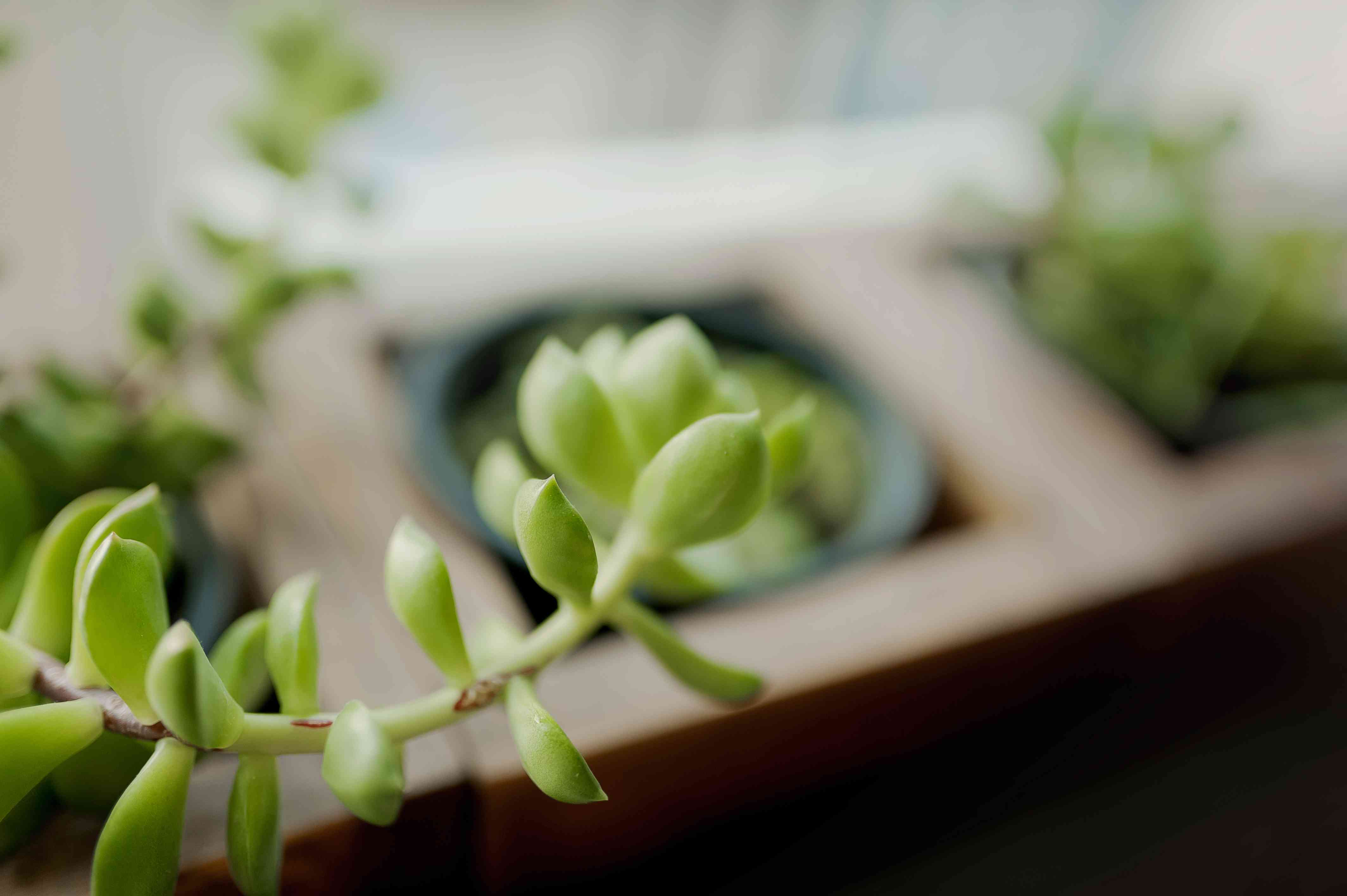Home>Types of Gardening>Ornamental Gardening>How Tall Do Sunflowers Grow


Ornamental Gardening
How Tall Do Sunflowers Grow
Modified: January 22, 2024
Discover how tall sunflowers can grow in your ornamental garden with our comprehensive guide. Get expert tips on nurturing and maximizing the height of these beautiful flowers.
(Many of the links in this article redirect to a specific reviewed product. Your purchase of these products through affiliate links helps to generate commission for Chicagolandgardening.com, at no extra cost. Learn more)
Table of Contents
Introduction
Sunflowers are magnificent plants known for their vibrant yellow petals and towering heights. These ornamental beauties not only add a touch of sunshine to any garden but also attract pollinators like bees and butterflies. Many garden enthusiasts are captivated by the impressive height that sunflowers can reach, making them a popular choice for those seeking to create a visually striking landscape.
The height of sunflowers can vary significantly, with some varieties growing just a few feet tall while others can soar to astonishing heights of up to 16 feet or more. Understanding the factors that influence sunflower height and providing the ideal growing conditions can help gardeners achieve impressive results.
In this article, we will explore the factors that affect sunflower height, discuss the ideal growing conditions for sunflowers, highlight different sunflower varieties, examine the sunflower height records, and provide some tips for growing tall sunflowers in your own garden.
Whether you are a seasoned gardener looking to push the limits of sunflower heights or a beginner interested in adding a pop of color to your backyard, this article will provide you with the knowledge and inspiration you need to grow remarkable sunflowers.
Factors Affecting Sunflower Height
Several factors influence the height that sunflowers can reach, including genetics, environmental conditions, and cultivation practices. Understanding these factors can help gardeners optimize their growing techniques to achieve the desired sunflower height.
Genetics: The genetic makeup of sunflower seeds plays a crucial role in determining their height potential. Different sunflower varieties have varying growth habits, with some naturally inclined to grow taller than others. When selecting sunflower seeds, it is essential to consider the desired height and choose varieties known for their tall growth.
Environmental Conditions: Sunflowers thrive in full sun, requiring at least six to eight hours of direct sunlight daily. Adequate sunlight is necessary for photosynthesis and overall plant growth. Additionally, ideal temperatures for sunflower growth range between 70-78°F (21-25°C). Extreme heat or cold can affect the plants’ growth and potentially limit their height.
Soil Quality: The quality of soil directly impacts sunflower growth. Sunflowers prefer well-draining soil that is rich in organic matter. Loose and fertile soil allows for proper root development, essential for supporting the plant’s height. Poor soil conditions, such as heavy clay or compacted soil, can stunt sunflower growth and limit their height potential.
Watering: Sunflowers are relatively drought-tolerant once established, but regular watering is crucial during their early growth stages. Adequate moisture helps promote healthy root development, which ultimately contributes to taller plants. However, overwatering can lead to root rot and hinder growth, so it is important to maintain a proper balance and avoid waterlogging the soil.
Fertilization: Providing sunflowers with balanced nutrition can facilitate optimal growth. Phosphorus-rich fertilizers can encourage root development, while nitrogen-rich fertilizers can promote foliage growth. However, excessive nitrogen can result in plants with lush foliage but shorter heights. It is important to follow recommended fertilization practices and avoid over-fertilization.
Spacing: Giving sunflowers adequate space is crucial for maximizing their height potential. Crowded plantings can lead to competition for sunlight, nutrients, and water, which can result in stunted growth. Be sure to follow the recommended spacing guidelines for the specific sunflower variety being grown to allow each plant ample room to reach its full height.
By considering these factors and making the necessary adjustments to provide favorable growing conditions, gardeners can help sunflowers reach their maximum height potential and create a stunning display in their gardens.
Ideal Growing Conditions for Sunflowers
To achieve the best results when growing sunflowers, it is important to provide them with the ideal growing conditions. By meeting their requirements for sunlight, soil, water, and spacing, you can encourage healthy growth and maximize their height and visual appeal.
Sunlight: Sunflowers are sun-loving plants and require a minimum of six to eight hours of direct sunlight each day. Be sure to choose a location in your garden that receives ample sunlight throughout the day. Without enough sunlight, sunflowers may grow weak and spindly, resulting in shorter heights.
Soil: Sunflowers prefer well-draining soil that is rich in organic matter. Before planting, prepare the soil by loosening it with a garden fork or tiller. Incorporate compost or well-rotted manure to improve soil fertility and drainage. Avoid heavy clay or compacted soil, as it can hinder root development and limit the height of the sunflowers.
Water: While sunflowers are relatively drought-tolerant, they still require regular watering during their early growth stages. Provide them with deep, thorough watering once a week, ensuring that the soil is moist but not waterlogged. Once the plants are established, they can tolerate occasional dry spells, but prolonged drought can stunt their growth and reduce their height potential.
Spacing: Proper spacing is essential for optimal sunflower growth. Depending on the variety, sunflowers should be spaced approximately 18 to 24 inches apart, allowing enough room for each plant to spread its roots and grow to its full height. Crowded plantings can lead to competition for resources and result in stunted growth.
Fertilization: Sunflowers benefit from a balanced fertilization approach. Before planting, incorporate a slow-release, balanced fertilizer into the soil. This will provide a steady supply of nutrients throughout the growing season. Additionally, side-dress the plants with a nitrogen-rich fertilizer when they reach about six inches in height. Be cautious not to over-fertilize, as excessive nitrogen can promote foliage growth at the expense of height.
Weed and Pest Control: Regular weeding is crucial to prevent competition for nutrients and ensure optimal growth. Keep the area around the sunflowers free from weeds by pulling them out regularly. Additionally, monitor for common pests such as aphids, slugs, and birds. Applying organic pest control measures when necessary can help protect the sunflowers from damage.
By providing these ideal growing conditions, gardeners can encourage robust growth and impressive heights in their sunflowers. Remember, each variety may have specific requirements, so it’s always beneficial to familiarize yourself with the specific needs of the sunflowers you are growing.
Different Varieties of Sunflowers
Sunflowers come in a wide variety of shapes, sizes, and colors, offering gardeners a plethora of options to choose from. Whether you prefer the classic yellow petals or desire a unique twist, there is a sunflower variety to suit every gardener’s taste and aesthetic. Let’s explore some of the different varieties.
Classic Tall Sunflowers: The classic tall sunflowers are known for their striking height, often reaching 8 to 12 feet or even taller. Varieties such as ‘Russian Mammoth’ and ‘Giant Sungold’ are popular choices for those seeking impressive heights. Make sure to provide adequate spacing and staking to support these towering beauties.
Dwarf Sunflowers: If you have limited space or prefer smaller plants, dwarf sunflowers are an excellent choice. These compact varieties typically reach heights of 1 to 3 feet, making them perfect for containers, border gardens, or even indoor cultivation. ‘Teddy Bear’ and ‘Sundance Kid’ are two popular dwarf sunflower varieties known for their vibrant blooms.
Multicolored Varieties: Sunflowers aren’t just limited to shades of yellow. There are several varieties that feature unique and captivating colors. ‘Earthwalker’ showcases deep red to mahogany petals, while ‘Italian White’ displays elegant creamy white blooms. These eye-catching varieties can add a touch of diversity and intrigue to your garden.
Pollen-Free Varieties: If you love sunflowers but have allergies or prefer minimal pollen, there are pollen-free varieties available. These varieties, such as ‘Jade’ and ‘Sunray’, feature double or semi-double blooms without the traditional pollen center. The absence of pollen makes them an excellent choice for those with sensitivities or for indoor floral arrangements.
Multi-branched Varieties: Some sunflower varieties produce multiple branches and blooms from a single plant, creating a stunning display of flowers. These varieties, known as branching sunflowers, provide an abundance of flowers that attract pollinators and extend the blooming period. ‘Autumn Beauty’ and ‘Sunset’ are popular multi-branched sunflower varieties.
Colorful Petal Varieties: In addition to different shades of yellow, there are sunflower varieties that feature petals in unique and vibrant colors. ‘Strawberry Blonde’ showcases petals ranging from shades of pale yellow to stunning pink and red tones. ‘Velvet Queen’ offers rich and velvety maroon petals. These colorful petal varieties are sure to make a statement in your garden.
These are just a few examples of the vast array of sunflower varieties available. When selecting sunflower seeds, consider the height, color, and growth habit that align with your gardening vision. Mixing different varieties in your garden can create a dynamic and visually appealing landscape.
Sunflower Height Records
Sunflowers have gained fame for their impressive heights, and throughout history, there have been remarkable records set for the tallest sunflowers ever grown. These towering plants have captured the attention of garden enthusiasts and nature lovers alike. Let’s take a look at some of the notable sunflower height records.
World Record: The current official Guinness World Record for the tallest sunflower stands at a magnificent 30 feet and 1 inch (9.17 meters). This record was set by Hans-Peter Schiffer from Germany in 2014. The sunflower, named “Arwed,” wowed spectators with its incredible height in the small town of Karstädt.
American Record: In the United States, the record for the tallest sunflower is held by Emily Martin from Maple Park, Illinois. Her sunflower, named “Stella,” reached an astounding height of 26 feet and 4 inches (8.03 meters) in 2015. Emily’s dedication and careful cultivation techniques helped her achieve this remarkable feat.
Unofficial Records: Although not officially recognized by Guinness World Records, there have been reports of sunflowers growing even taller than the current world record. Some enthusiasts claim to have grown sunflowers exceeding 35 feet (10.67 meters) in height, but these records are yet to be officially documented.
The achievement of such incredible sunflower heights requires meticulous care, optimal growing conditions, and a bit of luck. Gardeners who aspire to break records may employ special techniques like consistent feeding, careful pruning, and providing extra support to the stems as they grow taller.
While it may be challenging for the average gardener to reach these extraordinary heights, the pursuit of growing taller sunflowers can be a thrilling and rewarding experience. Even if you don’t break any records, your sunflowers can still bring joy and beauty to your garden.
Remember, whether aiming for record-setting heights or simply cultivating sunflowers for their stunning appearance, the journey of growing sunflowers is an opportunity to connect with nature and witness the incredible marvels of plant growth.
Tips for Growing Tall Sunflowers
Growing tall sunflowers can be a fun and rewarding experience for any gardener. Achieving impressive heights requires careful attention to detail and a few strategic techniques. Here are some tips to help you cultivate tall sunflowers in your own garden:
Select the Right Variety: Choose sunflower varieties known for their tall growth habits. Look for terms like “giant,” “tall,” or “mammoth” when selecting seeds. Varieties such as ‘Russian Mammoth’ and ‘Giant Sungold’ are popular choices for achieving considerable heights.
Plant in Full Sun: Sunflowers thrive in full sunlight, so select a location in your garden that receives at least six to eight hours of direct sunlight each day. Adequate sunlight is essential for healthy growth and maximizing the potential height of the sunflowers.
Prepare the Soil: Sunflowers prefer well-draining soil that is rich in organic matter. Before planting, loosen the soil with a garden fork or tiller to ensure proper root development. Incorporate compost or well-rotted manure to enhance fertility and drainage.
Space Them Out: Provide each sunflower plant with enough space to grow and spread its roots. Allow approximately 18 to 24 inches of spacing between plants. Crowded planting can result in competition for resources and limited growth potential.
Support Tall Stems: As sunflowers grow taller, they may need additional support to prevent bending or toppling over. Use stakes or bamboo poles placed near the stem for support. Gently tie the stem to the support using soft garden twine or fabric strips. Avoid tying too tightly to allow for natural movement and growth.
Water Regularly and Consistently: While sunflowers are relatively drought-tolerant, consistent and regular watering is crucial, especially during their early growth stages. Water deeply once a week, ensuring that the soil remains evenly moist. Avoid overwatering, as waterlogged soil can lead to root rot.
Ensure Adequate Nutrients: Sunflowers require proper nutrition for healthy growth. Before planting, incorporate a slow-release, balanced fertilizer into the soil. Side-dress the plants with a nitrogen-rich fertilizer when they reach about six inches in height. Be cautious not to over-fertilize, as excessive nitrogen can promote foliage growth at the expense of height.
Prune Side Shoots: To encourage central stem growth and maximize height, consider pruning the side shoots or laterals that develop along the main stem. Pinch or prune the side shoots when they are small and tender to redirect the plant’s energy towards upward growth.
Monitor for Pests and Diseases: Regularly inspect your sunflowers for any signs of pests or diseases. Common pests like aphids, slugs, and caterpillars can damage the plants and hinder their growth. Use organic pest control methods when necessary to protect your sunflowers.
By following these tips and providing the ideal growing conditions, you can increase the chances of growing tall, majestic sunflowers that will be the talk of the neighborhood. Enjoy the process of nurturing these beautiful plants and witnessing their incredible height in your garden.
Conclusion
Sunflowers are enchanting plants that can transform any garden with their vibrant colors and impressive heights. By understanding the factors that contribute to sunflower height and providing them with the ideal growing conditions, you can cultivate tall and magnificent sunflowers that will captivate and stun anyone who sees them.
Factors such as genetics, environmental conditions, soil quality, watering, fertilization, spacing, and pest control all play a role in determining the height that sunflowers can reach. By carefully considering these factors and implementing appropriate techniques, you can encourage healthy growth and maximize the potential height of your sunflowers.
Choosing the right sunflower variety is also crucial. Whether you opt for classic tall sunflowers, dwarf varieties, multicolored blooms, or pollen-free options, there is a wide variety to suit every gardener’s preferences and gardening vision.
Exploring the records set for the tallest sunflowers and learning from the experiences of those who have achieved remarkable heights can provide inspiration and motivation. While breaking records may be a lofty ambition for most gardeners, the joy and beauty that sunflowers bring to a garden or landscape are priceless.
With careful attention, proper care, and a touch of creativity, you too can grow tall sunflowers that will leave a lasting impression. Experiment with different techniques, learn from each growing season, and enjoy the journey of nurturing these magnificent plants.
So, roll up your sleeves, get your hands dirty, and embark on the adventure of growing tall sunflowers. Discover the wonder and awe that these botanical giants can bring to your garden and create a stunning display that will leave everyone in admiration of nature’s beauty.










